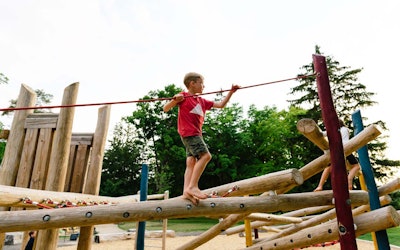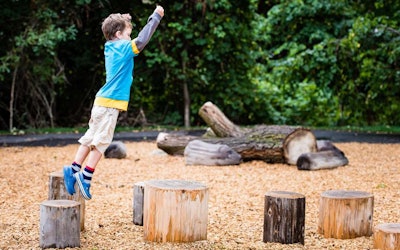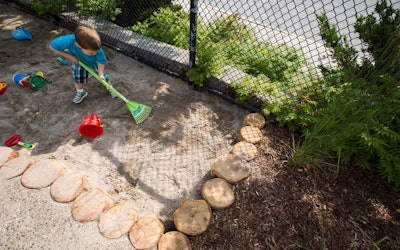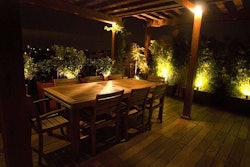 Natural playgrounds allow children to explore and challenge themselves with a little risk involved.
Natural playgrounds allow children to explore and challenge themselves with a little risk involved.Photo: Earthscape
In order to grow properly, plants must be challenged to stretch their roots. Likewise, children’s skills grow when they are challenged while out in nature.
For years now, many parents have been concerned that their children are falling out of touch with nature. Yet even when youngsters go to playgrounds, the structures there are so safe and artificial, there’s nothing natural about the place.
Since Richard Louv’s book Last Child in the Woods was published in 2005, an interest in natural playgrounds has gained traction. Louv points out the correlation between healthy physical, mental and emotional development in children and nature.
“I think it’s a trend that people have been interested in for quite a number of years, but we’ve seen it grow in the past five years,” said Laura Hilliard, communications manager for Earthscape, a design-build company that specializes in custom play spaces in Toronto, Canada. “People are getting tired of traditional plays spaces, especially older kids.
“When you try to make playgrounds so safe you impede their development, you need to take a step back and create a more natural space.”
There are a number of things that children are looking for in their play space, but here are the main aspects that should be addressed when creating a natural playground.
Risk
Risk, or rather the absence of it, is one of the main reasons traditional playgrounds are failing to stimulate young minds. There is little or no physical challenge. If a child is in a structured environment, they have no choice in how to go about playing or reaching a certain location.
With the proper amount of risk involved, kids can begin to test their balance and agility. Even if they fail, they learn the value of trying until they do succeed, building confidence in the process. Free movement and the possibility of choice allows the child to decide whether they are ready to face a certain challenge and how they plan to go about tackling it.
Natural design
 Rather than climbing even stairs, children can choose a hilly slope or a rock climbing wall to reach the top.
Rather than climbing even stairs, children can choose a hilly slope or a rock climbing wall to reach the top.Photo: Earthscape
“One of the things that traditional playgrounds don’t offer kids are structures that are naturally occurring in the real world,” Hilliard said. “Everything is equal distance so they don’t get to develop the physical skills they would need for climbing in a rocky, coastal environment or hiking in a forest.”
Instead of having a child climb a set of straight stairs to go down a slide, a natural playground would use a hill or a slope to build in a slide since you aren’t going find stairs occurring naturally in the environment.
The different elements of a natural playground also flow together, as one seamless landscape, instead of sectioned off portions. The more irregularity there is to a space, the more freely the children can use their imagination.
Natural materials
One of the most crucial elements of creating a natural playground is using the right materials. Wood, stone, sand and water are all substances that can be found in the outdoors and offer different sensory exploration for children.
 Natural materials like wood are found to be viewed positively by children.
Natural materials like wood are found to be viewed positively by children.Photo: Earthscape
Plant life that attracts butterflies or bees can provide an opportunity for children to see things growing and interacting with each other.
Just as being around nature relaxes adults, it is also soothing to children.
“We use primarily wood since it doesn’t get super hot or super cold,” Hilliard said. “Studies have shown that kids get a very comforting sensation when touching the wood versus a hot plastic or color-coated stainless steel.”
At Earthscape, they also take the time to hand-carve the logs they use so the children can see that someone took the time to craft it, leaving behind etchings of dragonflies and other animals for them to discover.
Loose materials
One great way to encourage learning is to allow for experimentation. If a child is presented with opportunities they don’t find at home, such as digging in the sand or playing in the water, they will be able to challenge their creativity by playing with unfamiliar features.
 Playing with loose materials like sand allows children to construct and be imaginative.
Playing with loose materials like sand allows children to construct and be imaginative.Photo: Earthscapes
Loose logs, rocks, and rope can provide a kid the chance to create their own adventure, with a structure that is entirely their own. Having loose materials can also inspire teamwork and socialization as the children work together to create a structure.
Children are naturally curious, so having little surprises they can actually collect, examine and build with only adds to their imagination and desire to explore.









